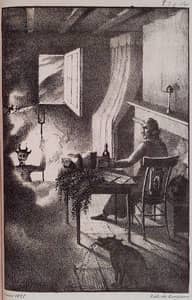 CartoTutor: Practice Tool for
a Three-Playing-Card SpreadThis page displays a simple, randomly-generated spread of three playing cards, in conjunction with a brief description of a querent (the person for whom a reading is conducted) and a topic of interest. It is intended for study purposes, enabling cartomancers to practice giving short readings for a variety of situations. The cards can be considered as aspects of the past, present, and future, or simply an interrelated group pertaining to the topic at hand.
To generate a new querent and card spread, simply click the “another reading” button. For maximum benefit, these practice readings should be spoken aloud, as they would be in a normal setting.
Many people have fallen for the urban myth that modern playing cards are derived from tarot cards. In fact, the reverse is true: tarot packs were created by adding additional cards to the already existing playing cards (~1420, in order to provide more “trump” cards for games such as Tarocco, from whence came the name). Further, another three centuries passed before these additional cards were embraced by various occult traditions, and acquired the meanings we attribute to them today. For these reasons, I believe that commercial playing card readers are well served by using card designs that are more suggestive of their ancient origins.
The card images displayed above reproduce a Genoese pattern for the game of baccarat. Published by Dal Negro (Carbonera, Italy), this pack comes with three double-blank cards. A nice alternative (and one that you may find more conveniently obtainable) is Artisan Tarot’s Portrait de Paris deck, reproducing a French pattern from the early 1700s.
Two good books for learning the meanings of playing cards are Nerys Dee’s Fortune-Telling by Playing Cards and Richard Webster’s Playing Card Divination For Beginners.
      … Doug Dyment … Doug Dyment

|